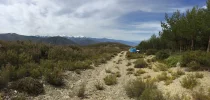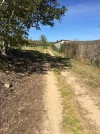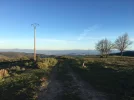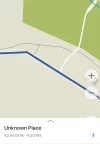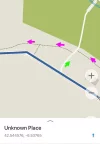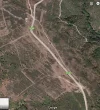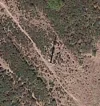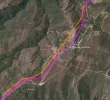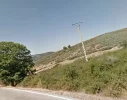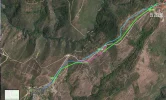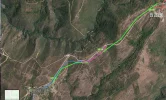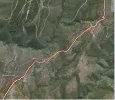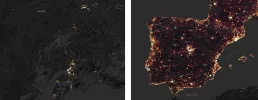howlsthunder
Active Member
- Time of past OR future Camino
- Camino Francés (2018)
Camino Francés (2020)
I am from Alaska where the question of "am I trespassing" is a very important one because private, state, federal, native/indian, and public lands are very much jumbled and you sometimes have to really do your homework to be sure you are not accidentally trespassing on property you shouldn't be on. (For example, there is a popular hiking trail that follows an abandoned railway bed along a river in my town. It's completely fine to walk along, but when arriving at "the end", to get back to the highway you are technically trespassing across a bit of tribal and then private land. Most people don't know this and that one should technically backtrack down the entire trail after walking it). In contrast, on my visit to the Scottish highlands I was surprised to find out that legally a person could walk or even camp out anywhere they like, so long as they are not damaging crops or disturbing livestock (I'm sure there must be finer details to this).
So I am wondering what the laws are in Spain? Beyond the obvious (NEVER walk in/across fields or pastures and definitely not where there are signs posted to keep out). In particular I'm interested in the following example:
On my Camino I'd notice (either visually or by noting on my Maps.me app) that there might be a road - usually dirt or gravel - that paralleled the Camino very closely. I only ever went on such a road twice; once just outside Molinaseca where the Camino is a paved sidewalk all the way to Ponferrada that I took in attempt to alleviate severe tendon pain that only flared up on pavement, and another one which was some sort of powerline/offroading "road" that swung over to the highest mountain point overlooking Ponferrada that I think may have also been marked in the Brierley map book - I took it to see the view. Another time while descending a mountain I saw that there was a lightly worn footpath that followed under the high voltage power line; at home people are generally fine using "powerline trails" unless they obviously cross someone's property, but though these seemed like it was the "middle of nowhere" I opted to avoid it just in case.
In all but the two noted situations I didn't feel the need to leave the Camino; the times that I would want to would be to avoid pavement but never to "shortcut" (in future Caminos I'm not predicting tendonitis will be as bad an issue as it was this time and if I find out what I did was wrong, I'll definitely not do it again). But I'm curious as to what the laws are anyway? Again, I'm talking about ROADS, dirt or gravel, that parallel the Camino, usually within a dozen feet or so, that have no gates or signage of any kind, and trails beneath power/utility lines in addition.
So I am wondering what the laws are in Spain? Beyond the obvious (NEVER walk in/across fields or pastures and definitely not where there are signs posted to keep out). In particular I'm interested in the following example:
On my Camino I'd notice (either visually or by noting on my Maps.me app) that there might be a road - usually dirt or gravel - that paralleled the Camino very closely. I only ever went on such a road twice; once just outside Molinaseca where the Camino is a paved sidewalk all the way to Ponferrada that I took in attempt to alleviate severe tendon pain that only flared up on pavement, and another one which was some sort of powerline/offroading "road" that swung over to the highest mountain point overlooking Ponferrada that I think may have also been marked in the Brierley map book - I took it to see the view. Another time while descending a mountain I saw that there was a lightly worn footpath that followed under the high voltage power line; at home people are generally fine using "powerline trails" unless they obviously cross someone's property, but though these seemed like it was the "middle of nowhere" I opted to avoid it just in case.
In all but the two noted situations I didn't feel the need to leave the Camino; the times that I would want to would be to avoid pavement but never to "shortcut" (in future Caminos I'm not predicting tendonitis will be as bad an issue as it was this time and if I find out what I did was wrong, I'll definitely not do it again). But I'm curious as to what the laws are anyway? Again, I'm talking about ROADS, dirt or gravel, that parallel the Camino, usually within a dozen feet or so, that have no gates or signage of any kind, and trails beneath power/utility lines in addition.
Last edited:



